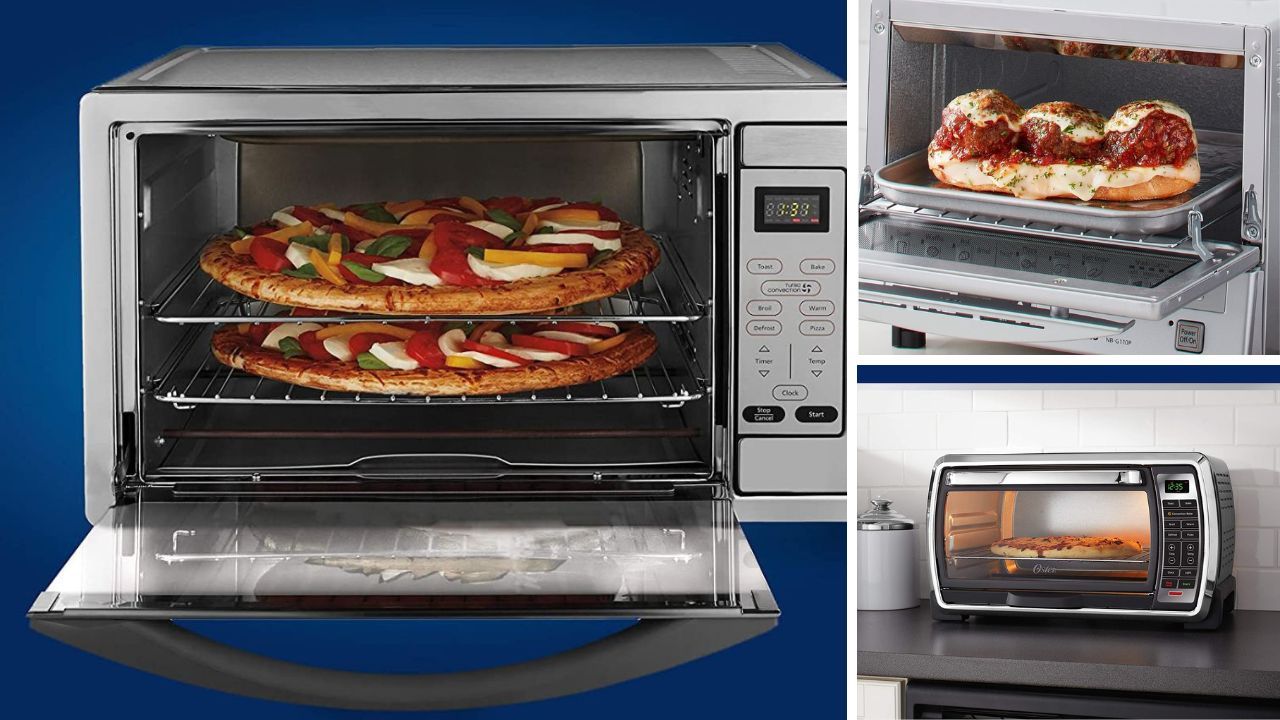Toaster oven vs regular oven is a topic that has been hotly debated for years. Both appliances are used to cook food, but they have some key differences.
A toaster oven is a small, portable oven that is designed to toast bread and bagels, as well as cook small meals.
On the other hand, a regular oven is a larger appliance that is used to cook larger meals and is typically built into the kitchen.
Understanding the differences between these two appliances is important when deciding which one to use. Toaster ovens are more energy-efficient than regular ovens and tend to heat up faster.
They are also more versatile, as they can be used for a variety of cooking tasks. Regular ovens, on the other hand, are better suited for cooking larger meals and can accommodate larger dishes.
When it comes to choosing between a toaster oven and a regular oven, there are several factors to consider.
These include the size of the meal you are cooking, the amount of time you have, and the type of food you are cooking.
By understanding the differences between these two appliances, you can make an informed decision about which one is right for you.
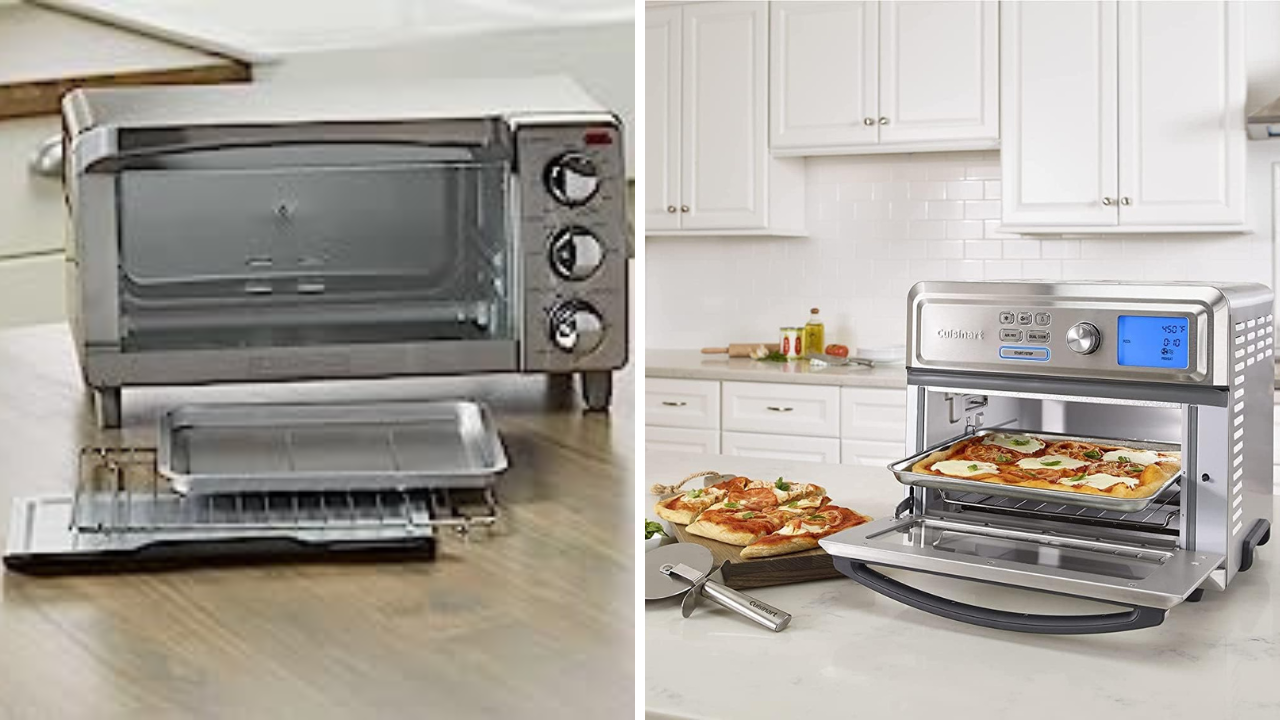
Key Takeaways
- Toaster ovens are smaller and more energy-efficient than regular ovens, while regular ovens are better suited for cooking larger meals.
- Both appliances have their advantages and disadvantages, and the choice between them depends on the type of food you are cooking and the amount of time you have.
- By understanding the differences between toaster ovens and regular ovens, you can make an informed decision about which one is right for you.
Comparison Table
| Aspect | Toaster Oven | Regular Oven |
|---|---|---|
| Benefits |
|
|
| Drawbacks |
|
|
| Energy Efficiency | Better for small meals | Better for large meals |
| Cooking Speed | Faster for small meals | Faster for large meals |
| Versatility | Limited functionalities | Wide variety of cooking methods |
| Price | Generally less expensive | Can be more expensive |
| Best Suited For | Small kitchens, dorm rooms | Large families, baking enthusiasts |
Understanding Toaster Ovens
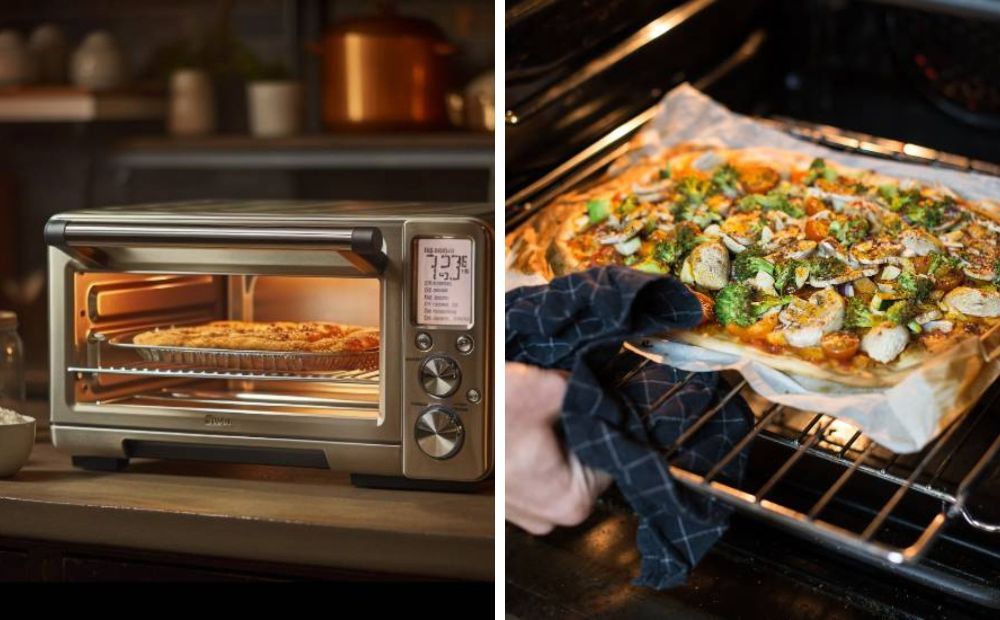
Toaster oven and a regular oven
Definition
A toaster oven is a small, countertop appliance that can be used to cook or heat up a variety of foods.
It is essentially a miniature version of a traditional oven, with a compact design that allows it to fit easily on a kitchen counter.
Toaster ovens typically have a front-facing glass door and a removable tray or rack for holding food.
Benefits
One of the biggest benefits of a toaster oven is its compact size. It takes up much less space than a traditional oven and can be easily moved around or stored away when not in use.
Additionally, toaster ovens are generally more energy-efficient than regular ovens, as they require less energy to heat up and can cook food more quickly.
Toaster ovens are also great for cooking small portions of food. They are perfect for reheating leftovers, cooking frozen meals, or making small snacks like toast, bagels, or mini pizzas.
Some models even come with additional features like a built-in air fryer or a rotisserie function.
Drawbacks
While toaster ovens offer many benefits, they also have some drawbacks to consider. One of the biggest drawbacks is their limited capacity.
Toaster ovens are not ideal for cooking large meals or baking large batches of cookies or other treats.
Additionally, their compact size can make it difficult to fit certain types of cookware inside.
Another potential drawback of toaster ovens is their limited temperature range.
While they can reach temperatures of up to 450°F, they are not as powerful as traditional ovens and may not be able to cook certain dishes as well.
For example, they may struggle to roast large cuts of meat or bake delicate pastries.
Overall, toaster ovens can be a great addition to any kitchen, but they are not a perfect replacement for traditional ovens.
They offer many benefits, but also have some limitations that should be taken into account when deciding whether or not to purchase one.
Understanding Regular Ovens
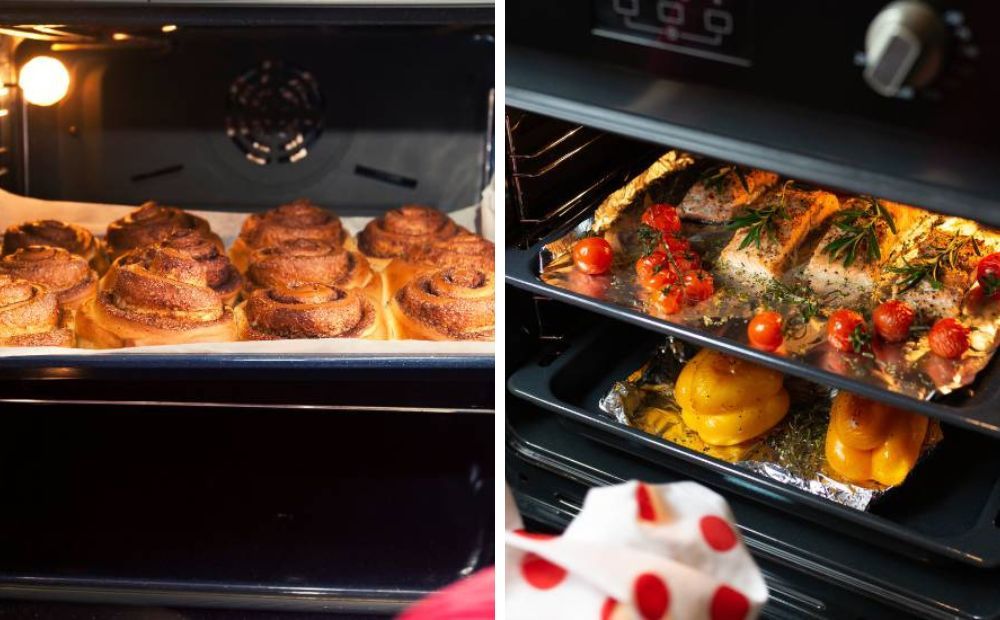
Baking in a regular oven
Definition
A regular oven is a larger oven, typically with a capacity of 5.0 cubic feet or more.
It is a common appliance in most kitchens and is used for baking, roasting, broiling, and many other cooking tasks.
Regular ovens come in different types, including gas, electric, and dual fuel ovens. They are usually built into the wall or installed as a freestanding unit.
Benefits
Regular ovens are great for preparing meals for large groups, and they are also ideal for cooking multiple dishes at once.
They offer a lot of cooking space and can accommodate large baking sheets, roasting pans, and other cookware.
They are also more energy-efficient than toaster ovens, which is why they are a popular choice for restaurants and other commercial kitchens.
Regular ovens are versatile and can cook a wide variety of foods, including meats, vegetables, casseroles, and baked goods.
They offer precise temperature control and consistent heat distribution, which is essential for achieving perfect cooking results.
Drawbacks
One of the main drawbacks of regular ovens is their size.
They take up a lot of space in the kitchen and can be challenging to install in smaller kitchens.
They also take longer to preheat than toaster ovens, which can be a disadvantage if you are in a hurry.
Regular ovens can also be less efficient for smaller cooking tasks.
They require a lot of energy to heat up, and if you are only cooking a small meal or reheating leftovers, you may end up using more energy than necessary.
Additionally, regular ovens can be more challenging to clean than toaster ovens due to their size and complexity.
Comparing Toaster and Regular Ovens
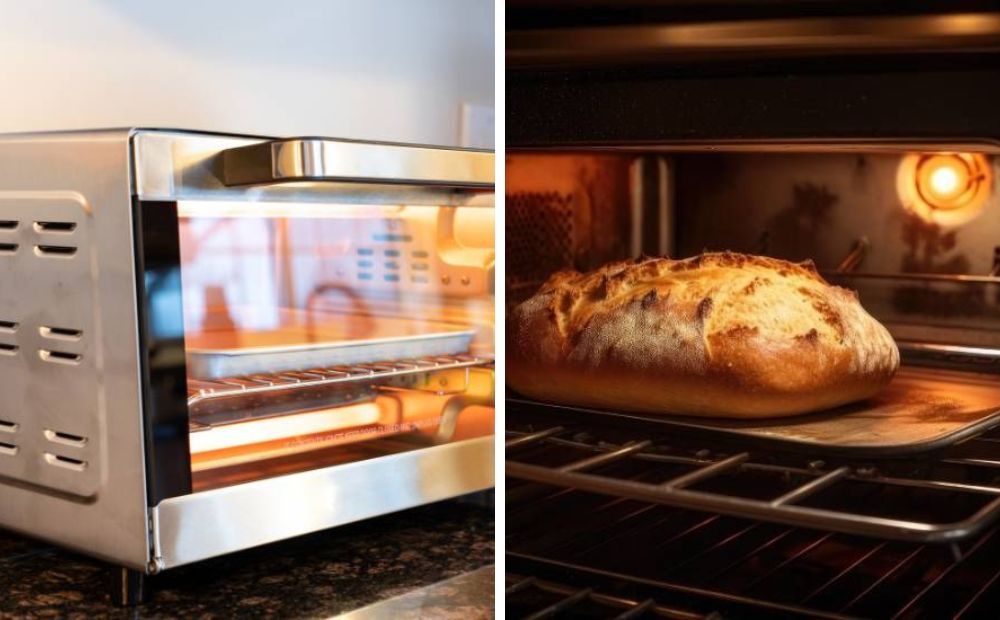
Toaster oven regular oven
1. Energy Efficiency
Toaster ovens are generally more energy-efficient than regular ovens. This is because they are smaller and require less energy to heat up.
In fact, toaster ovens use about half the energy of a regular oven when cooking small meals or snacks.
However, when cooking larger meals, the toaster oven may not be as energy-efficient as the regular oven, as it may need to run for a longer period of time.
2. Cooking Speed
Toaster ovens are generally faster than regular ovens when it comes to cooking small meals or snacks.
This is because they heat up faster and are smaller, which means they can cook food more quickly.
However, when cooking larger meals, the regular oven may be faster, as it has a larger cooking capacity.
3. Versatility
Regular ovens are generally more versatile than toaster ovens.
This is because they have a larger cooking capacity and can be used for a wider variety of cooking methods, such as baking, broiling, and roasting.
Toaster ovens, on the other hand, are better suited for smaller meals and snacks, and are generally limited to baking, broiling, and toasting.
4. Price
Toaster ovens are generally less expensive than regular ovens. This is because they are smaller and require less energy to heat up.
However, the price difference may not be significant, especially when comparing high-end toaster ovens to lower-end regular ovens.
When it comes to larger, more expensive models, regular ovens may actually be less expensive than toaster ovens.
Toaster ovens are generally more energy-efficient and faster than regular ovens when cooking small meals or snacks, but regular ovens are more versatile and better suited for larger meals.
Toaster ovens are also generally less expensive than regular ovens, but the price difference may not be significant.
Ultimately, the choice between a toaster oven and a regular oven will depend on individual needs and preferences.
TOP 5 OVEN RECIPES | How to Mealz
Making the Right Choice
When it comes to choosing between a toaster oven and a regular oven, there are several factors to consider.
In this section, we will discuss some of the most important factors to help you make an informed decision.
1. Space Considerations
One of the most significant factors to consider is the amount of space available in your kitchen.
A toaster oven is typically smaller than a regular oven, making it a great option for those with limited counter or storage space.
On the other hand, a regular oven is a better choice for those who need to cook larger meals or entertain guests.
2. Cooking Needs
Another important factor to consider is your cooking needs. If you only need to cook small meals or reheat leftovers, a toaster oven may be sufficient.
However, if you frequently cook large meals or need to bake multiple dishes at once, a regular oven is likely the better choice.
3. Budget Constraints
Finally, it's essential to consider your budget when choosing between a toaster oven and a regular oven.
Toaster ovens are generally less expensive than regular ovens, making them a great option for those on a tight budget.
However, it's important to keep in mind that a regular oven may be a better long-term investment if you frequently cook large meals or entertain guests.
When choosing between a toaster oven and a regular oven, it's important to consider your space limitations, cooking needs, and budget constraints.
By taking these factors into account, you can make an informed decision that meets your needs and fits within your budget.
Conclusion
Toaster ovens and regular ovens are both useful appliances in any kitchen. Each has its own set of advantages and disadvantages. I
n this article, we have compared toaster ovens and regular ovens based on their features, efficiency, and versatility.
Toaster ovens are smaller and more portable than regular ovens, making them ideal for small kitchens, dorm rooms, and RVs.
They are also more energy-efficient, as they use less electricity and heat up faster than regular ovens.
However, they have limited capacity and are not suitable for cooking large meals or baking.
On the other hand, regular ovens are larger and more versatile than toaster ovens.
They can accommodate larger dishes, such as roasts, casseroles, and pizzas, and are great for baking.
However, they take longer to heat up and use more energy than toaster ovens.
When it comes to choosing between a toaster oven and a regular oven, it all depends on your needs and preferences.
If you live in a small space and cook small meals, a toaster oven may be the better choice.
If you have a large family or enjoy baking, a regular oven may be more suitable.
Both toaster ovens and regular ovens have their own unique features and benefits. It is important to consider your needs and budget when choosing between the two.
Toaster Oven Tips | Pamela Salzman
Frequently Asked Questions
What are the advantages of using a toaster oven instead of a regular oven?
Toaster ovens have several advantages over regular ovens. Firstly, they are smaller and take up less space, making them ideal for small kitchens or apartments. Secondly, they heat up quickly and can cook food faster than regular ovens. Thirdly, they are more energy-efficient, which means they can save you money on your electricity bill.
What are the disadvantages of using a toaster oven instead of a regular oven?
Toaster ovens also have some disadvantages. Firstly, they have limited capacity and can only cook small portions at a time. Secondly, they may not be suitable for cooking certain types of food, such as large roasts or pizzas. Thirdly, they may not cook food as evenly as regular ovens.
What are the differences in cooking times between a toaster oven and a regular oven?
Toaster ovens generally cook food faster than regular ovens because they are smaller and heat up more quickly. However, the actual cooking time will depend on several factors, such as the type and quantity of food being cooked, the temperature setting, and the cooking method.
Can a toaster oven be used as a substitute for a regular oven?
Toaster ovens can be used as a substitute for a regular oven in many cases, but they may not be suitable for cooking certain types of food or large quantities of food. If you are planning to cook a large meal or a large roast, a regular oven may be a better option.
What are the benefits of using a regular oven over a toaster oven?
Regular ovens have several benefits over toaster ovens. Firstly, they have a larger capacity and can cook larger portions of food. Secondly, they are more versatile and can be used to cook a wider range of foods, such as large roasts or pizzas. Thirdly, they may cook food more evenly than toaster ovens.

In the market for a toaster oven but want one in a color? Check out our top quality picks that could work for you!
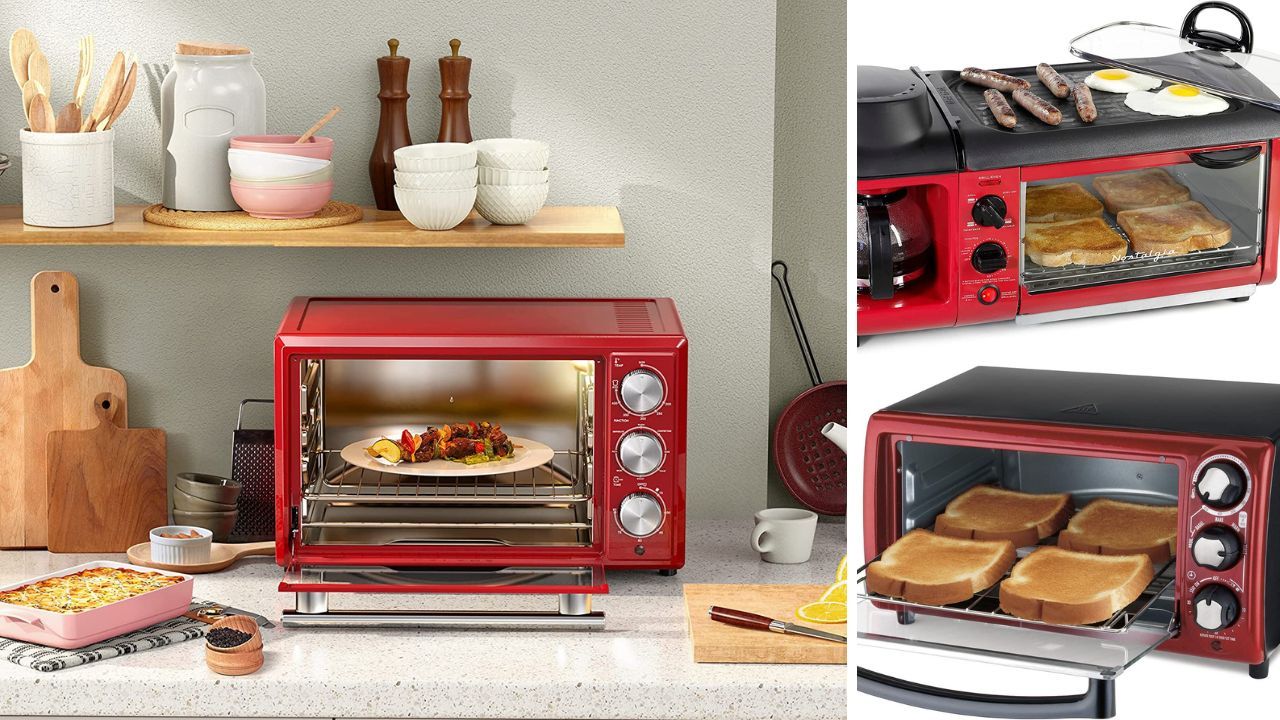
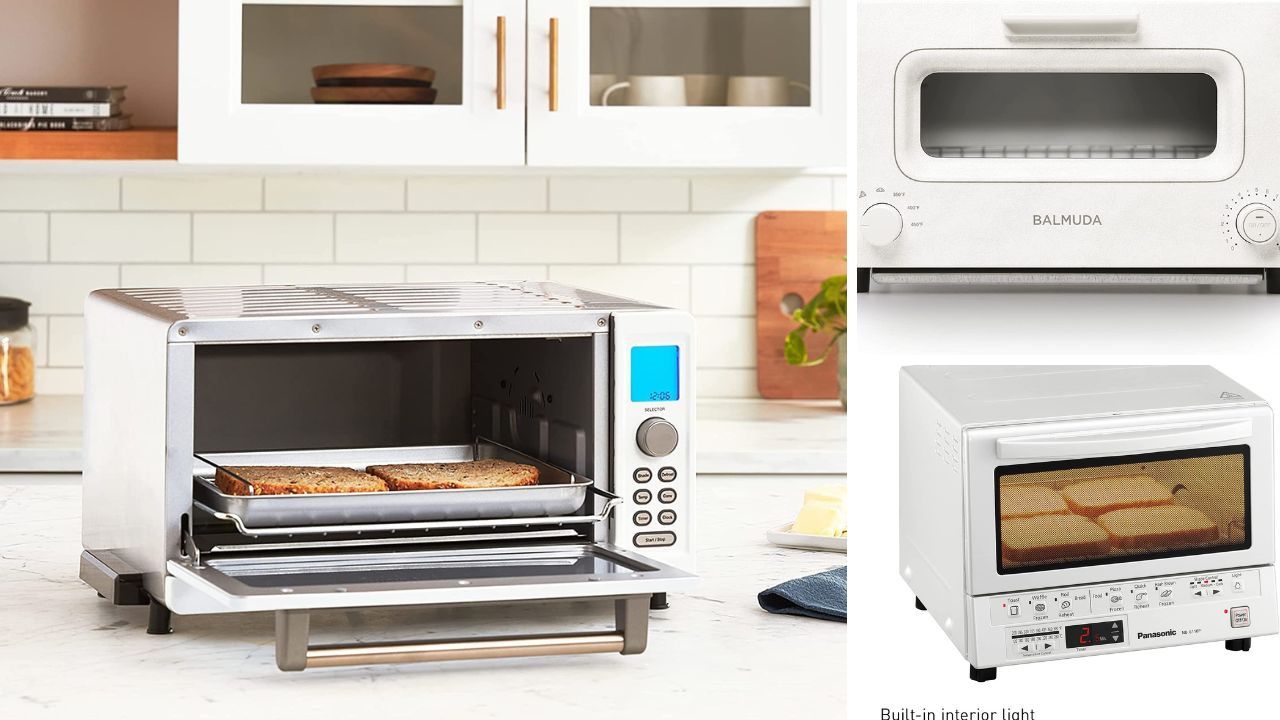
Or if you are looking for one that is designed with a sleek and modern look, then check out our top picks for digital toaster ovens.
